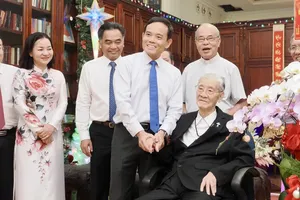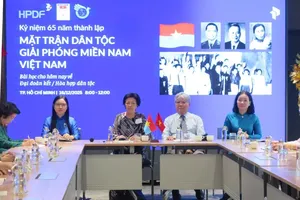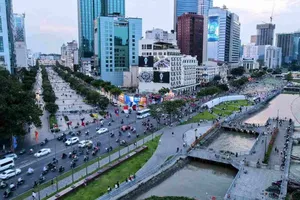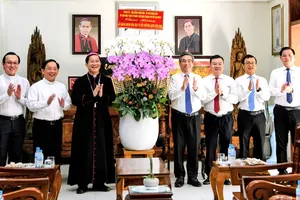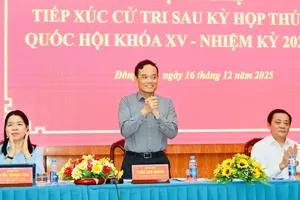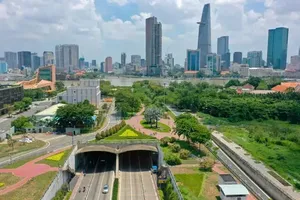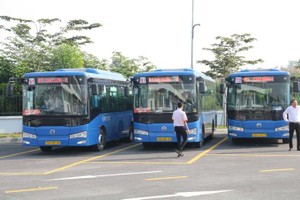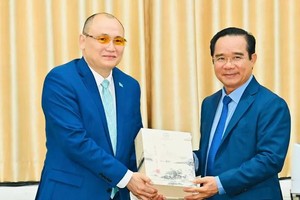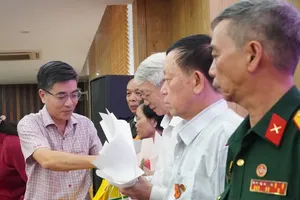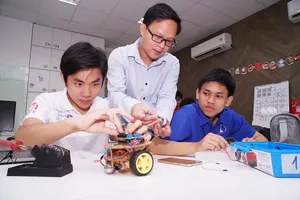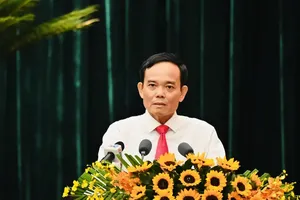
At a workshop on HCMC planning, Mr. Tuyen pointed out weaknesses in three phases including plan building, management and implementation organization.
Currently, the Government considers plan adjustments every five years. If plan quality is good as in European nations, it will be no need to change up to a decade.
In the upcoming time, HCMC will improve its planning quality to suit common development and extend adjustment period to ten years instead of five years as present. Mr. Tuyen said that HCMC would be able to do that because it has already had necessary tools. The city might get assistance from international consultants.
Talking about development targets, Mr. Tuyen said that HCMC will continue developing Thu Thiem new urban area, settle relevant problems and make the area to be an international financial hub.
HCMC now invites policy consultancy experts in attracting international financial sources. The municipal authorities are intended to develop smart cities in Districts 12 and Cu Chi, eco city in Can Gio, port cities in Districts 9 and Nha Be, hi-tech park and innovative districts in Districts 2, 9 and Thu Duc.
Answering investors’ questions concerning to the first metro line Ben Thanh-Suoi Tien, Mr. Tuyen said that the work is still under construction as normal, HCMC is now awaiting the Government’s approval to increase funds for the project.
HCMC has advanced on its budget to build the metro line, said Mr. Tuyen adding that the city is affordable for the project implementation. So far, 70 percent of the work volume has been done. It is scheduled to come into operation in the end of 2019 or early 2020.
Because total investment capital has been changed according to the reality of the project, HCMC has signed loan agreements and had available funds for ongoing construction. The city now just waits for competent authorities’ approval to use the funds.
About anti-flooding project invested by Trung Nam Company, Mr. Tran Vinh Tuyen said that the project is being implemented but it has a problem in unprecedented disbursement mechanism relating to three sides.
Traditionally, investors of BT (Build-Transfer) projects must prepare capital to implement projects. Afterward, relevant agencies will check and take over the work and make payment.
The city is making efforts to solve congestion for the company to get bank loan.
At the workshop, Mr. Ly Khanh Tam Thao, acting head of technical infrastructure management division under the Department of Architecture and Planning, said that the city is adjusting its common plan to meet development demand and adapt to sea level rise.
Currently, urban structure is spreading from the center area with separate housing model. That has resulted in inefficient land use, put heavy pressure on traffic system and caused environmental pollution and flooding.
Still, the city will not adjust the entire construction plan but determine priority targets for each phase. It will continue upgrading the existing center area and develop Thu Thiem new urban area to regulate and rationalize residents and housing.
Experts at the event said that HCMC has faced lot of challenges including old and new ones. Besides fast population increase, flooding, traffic jam, environmental pollution, the city has faced depression, increasing energy demand for new production fields and infrastructure development need for digital industry.
Mr. Michel Fanni, in charge of urban development and improvement for French Marne la Vallee new urban area, said that the urban model of oil slick will raise difficulties for residents’ travel. Their houses are in suburban area while economic and amusement activities concentrate on the center area.
France has developed new cities surrounding Paris to tackle the issue.
Mr. Michel Fanni stressed that planning solutions do not come from an individual or an consultant firm but from collective intelligence. It is an important factor for HCMC development in the future.
